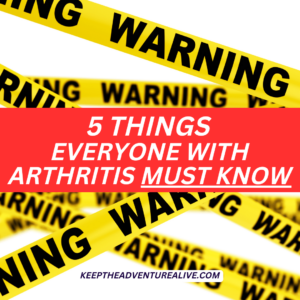Limping with arthritis can occur because your body is trying to spend as less time on your painful leg as possible. This is common when experiencing hip, knee and/or ankle osteoarthritis. When you begin to favor one side, your movement begins to change. This can actually lead to more arthritis pain, muscle tightness and other impairments secondary to changing the way you move. There is good news though! You can become more confident with simple movements.
If you find yourself limping with arthritis or favoring one side, it can actually lead to more arthritis pain. I know that if you’re reading this right now, more pain is not your goal.
There are ways that you can actually build more confidence on your painful side so you are able to walk and stand easier and with less pain.
First, we’re gonna talk a little bit about why limping happens and why we start favoring one side, and then I want you to stay till the end, because we’re gonna go through some simple movements that you can do to help to address.
If we haven’t met before my name’s Alyssa, I’m a doctor of physical therapy and I have made it my mission to bring you hope and to show you the best tips and tricks on how to make adventure possible with osteoarthritis.
The goal of this article is to show you there is hope to improve your walking and to actually enjoy it again!
Whether you have hip arthritis, knee arthritis, back pain, ankle arthritis or a combination that is making walking difficult- it is possible to reduce the limping.
Many members of Adventurers for Life have been able to progress their strength, balance, mobility and confidence with walking.
When you have the right movements to focus on, the right habits to reduce inflammation and irritation and the support of others who are going through similar things- magic can happen ✨
Below you’ll see wins from members of Adventurers for Life who have been able to reduce limping with arthritis:

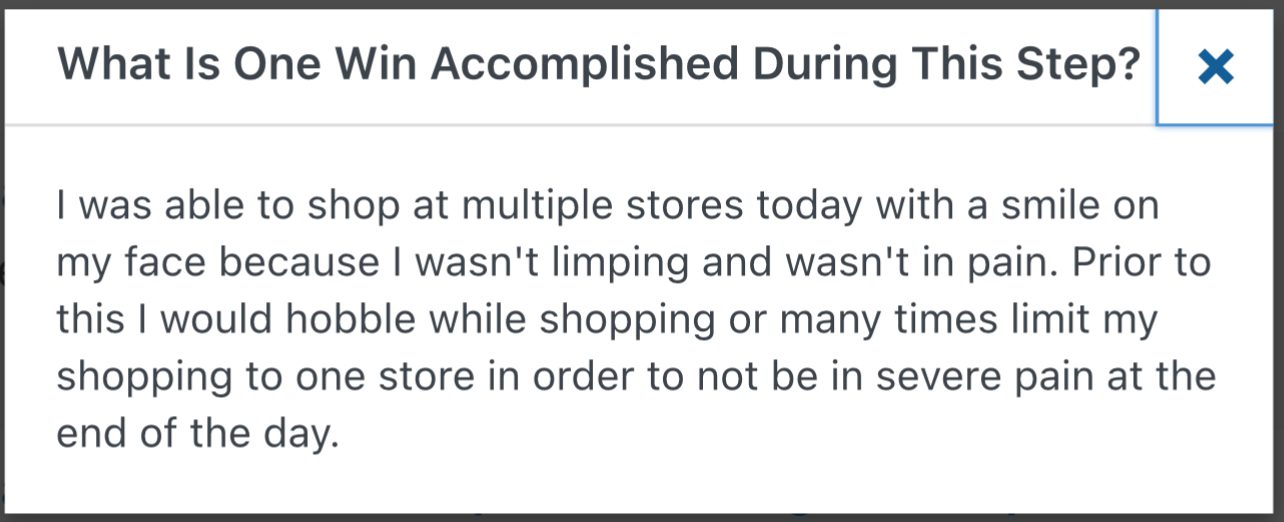
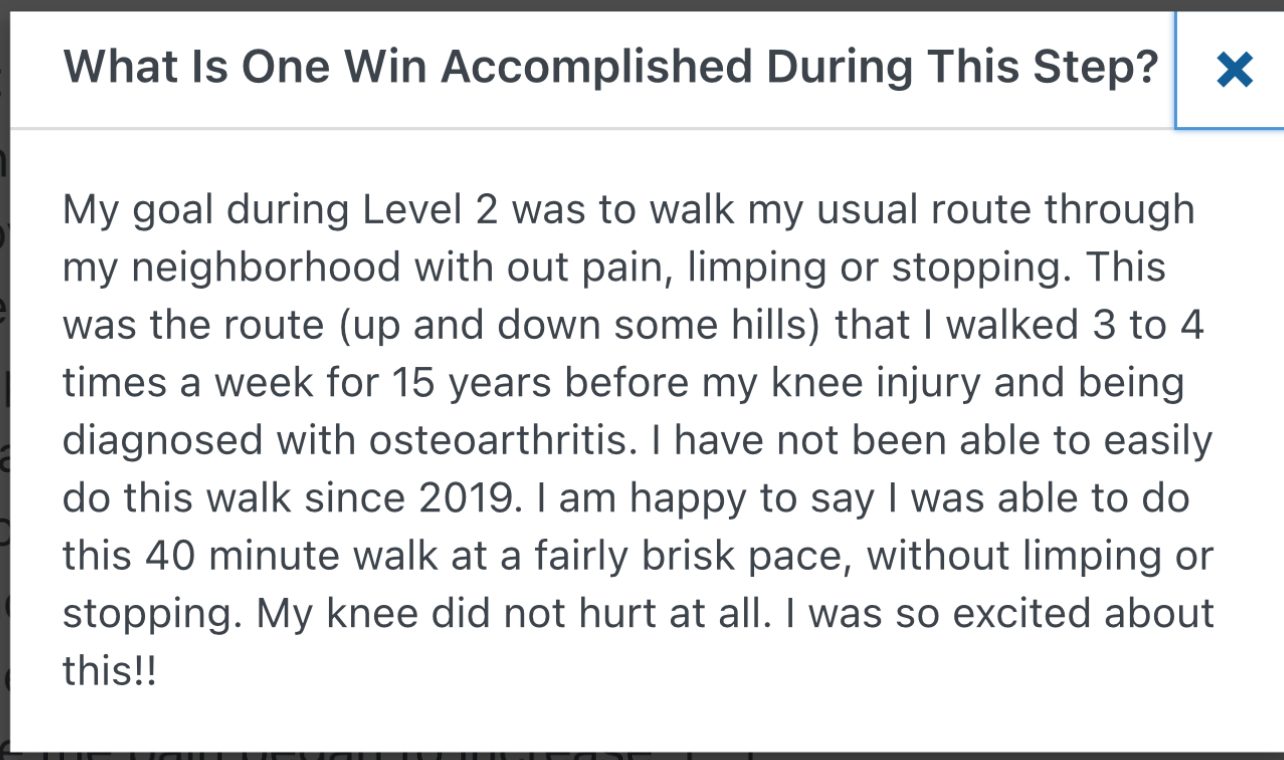
Why limping happens
Limping can be an adaptation your body makes as it’s trying to protect your leg and spend as less time as possible on that side.
Limping with arthritis can begin to happen because of a few reasons:
- strength deficits are present
- anticipation of pain
- instability, meaning your body does not trust that leg
In order to reduce limping, it is important to build strength and stability in the hip, knee, and ankle.
Once you begin to feel more confident in putting weight through the painful side, your muscles, tendons, and ligaments are able to finally work together and support your joints how they are meant to. The idea is to move as symmetrically as possible as that is how your body was made to move.
If you’d like to watch via video, here you’ll learn why limping happens and 3 movements to help reduce it ⬇️
Movements to prevent limping with arthritis
The best place to start working on movements when limping is the kitchen counter.
Using stable support can help to offload the leg and reduce fear of instability and/or falling, especially if you feel like your leg is going to give out or that you may lose your balance.
If you find yourself limping, it may be difficult to put your full weight on the leg you are experiencing difficulty with. The kitchen counter or another supportive surface can do wonders in helping you build confidence.
When setting up for these movements, it is important to have support either in front of you- holding on with both hands or opposite of the painful side like in these pictures below.
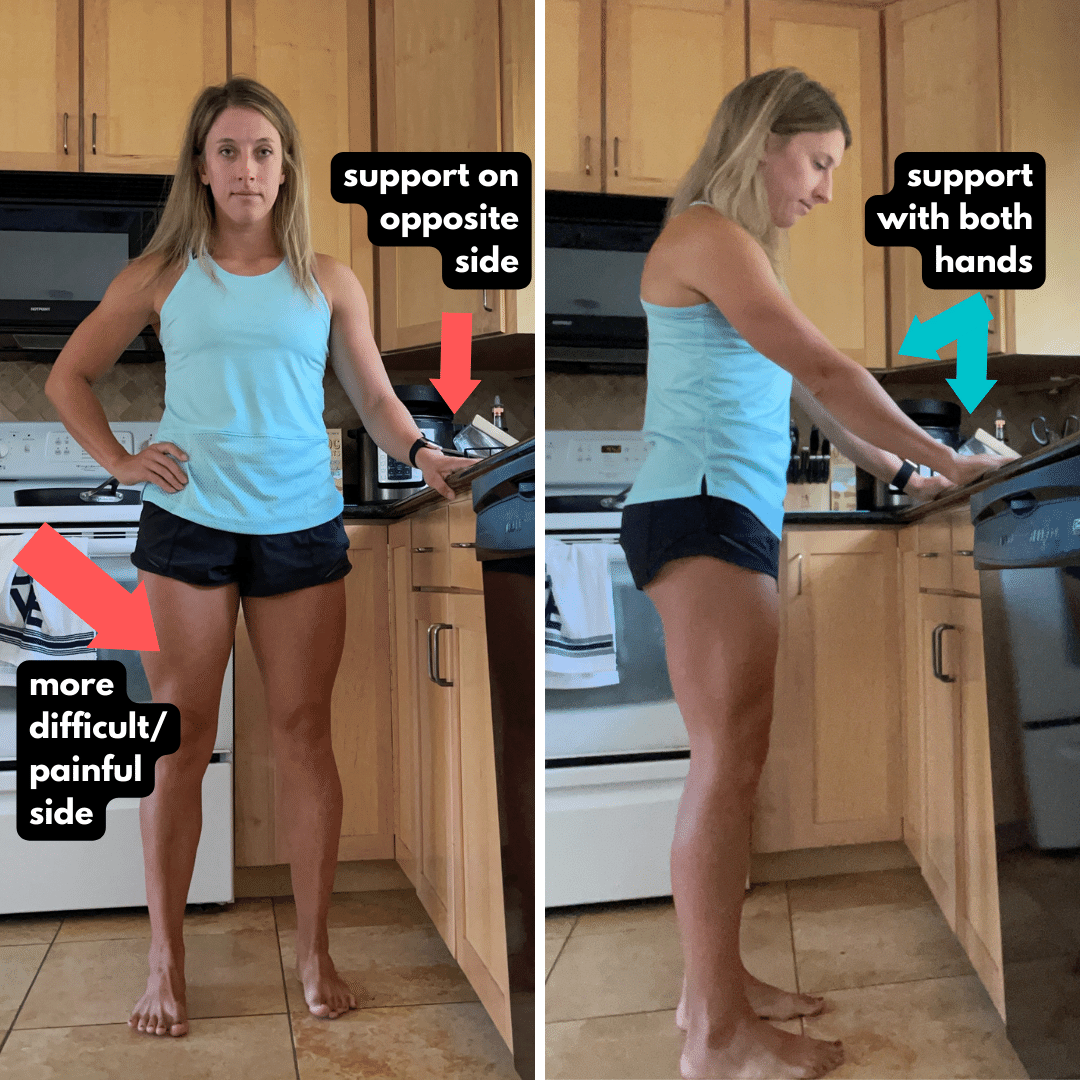
1. Alternating Heel Lifts
Limping when walking primarily occurs because of hesitancy to put full weight on each leg. This can be due to pain, weakness, instability, etc.
It is common that if you experience limping, you may have difficulty putting full weight on one side.
This specific heel lift exercise can help you to get used to accepting full weight and using your muscles appropriately for stability.
The best thing about this exercise is you still are keeping both feet on the ground so it’s a great way to practice gradually.
It can also be helpful to use as a walking warm-up. If you’d like a follow along walking warm-up, check out this video here.
If you find you are having difficulty maintaining your balance or are experiencing pain, lightly touch a surface such as a chair or a kitchen counter for support.
Aim for 30-60 seconds and complete as many repetitions as you can.
Modifications: add upper body support, decrease the speed at which you are moving
2. Multi-directional Stepping
This is one of my favorites to help build confidence and reduce limping with arthritis. The ultimate goal is to build up stability on the leg that you don’t trust at this time.
Putting full weight on one side can be hard to accomplish at first so choose one of the best supporting positions for you, as explained above.
It’s important to note that if you have difficulty straightening your leg, due to tightness behind the knee, it can make standing on one leg hard to do. Here is an article explaining more about back of the knee tightness and pain.
You will put full weight on one side and with the other side, you’ll step forward, sideways then backwards.
I usually recommend starting using support then try to progress away from it as you’re able to. Notice how I have the support set up in the video, opposite to the stationary leg.
If you are trying this and you’re getting a lot of shoulder movement or you’re feeling pain on the side that you’re standing on, use the two handed set-up shown in the earlier picture in the article.
Aim to complete 8-12 full repetitions on each side. One repetition= forward, sideways, and backwards.
Modifications: reduce the step length, use more upper body support, decrease the speed of movement.
3. Tandem with Head Turns
Balance plays a big role in having confidence during walking which can help to reduce limping.
This can be a great exercise to start with. For any balance exercise I highly recommend using a stable support surface or going into the corner of a wall so you have support on both sides. Safety during balance is incredibly important.
Place one foot slightly in front of the other. The further your foot is in front, the harder this exercise will be. Widen your feet to make this easier, to increase your base of support.
Once you feel stable, increase the difficulty by turning your head one way and then the other. This further challenges balance and builds stability to reduce limping when walking.
Please keep in mind that the back leg is going to be working the hardest so it’s important to know that you complete the exercise on both sides.
Complete 10-20 repetitions on each side or as many as you comfortable with.
Modifications: widen your stance, use upper body support
If you’re looking for more balance tips, I would highly recommend heading to this video next.
How to be successful in reducing limping with arthritis
With these movements above, the key is consistency in order to reduce limping with arthritis. Completing these everyday or every other day is a great place to start depending on how your joints react. Make sure to listen to your body and take rest breaks when needed.
Consistency over the next 3-4 weeks may help you begin to notice a difference. Some people will notice it quicker than others so it’s important to stick with it!
The key to reducing limping with arthritis is to build confidence and stability on the side you typically favor and make strength as symmetrical as possible.
My main mission with Keep the Adventure Alive is to show you how to adventure with osteoarthritis. That means how to get back to traveling, how to play with your grandkids, how to even just walk around the neighborhood with friends, walk longer, distances, run errands, whatever it is.
The best place to get started is to join the free 3 Day Walking Workout Challenge that is perfect for beginners to start rebuilding strength and balance.
Together, we will dive into movements that will help your joints through improving strength, balance, and mobility to help you walk with ease. Sign up below:
I believe in you. You can do this. The only way to have success is through taking action. It’s time to get started.
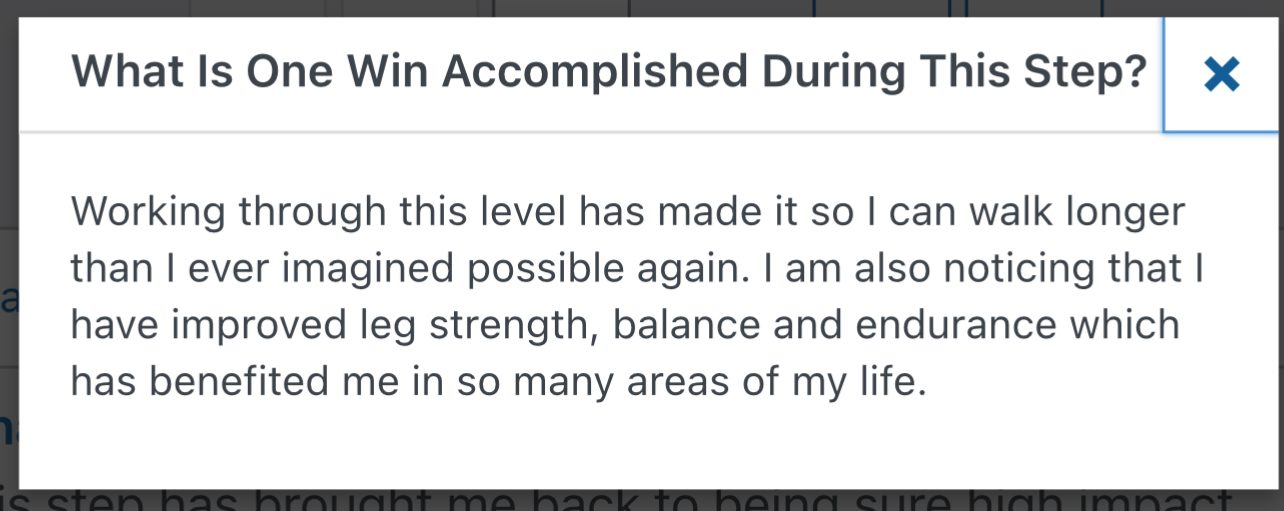
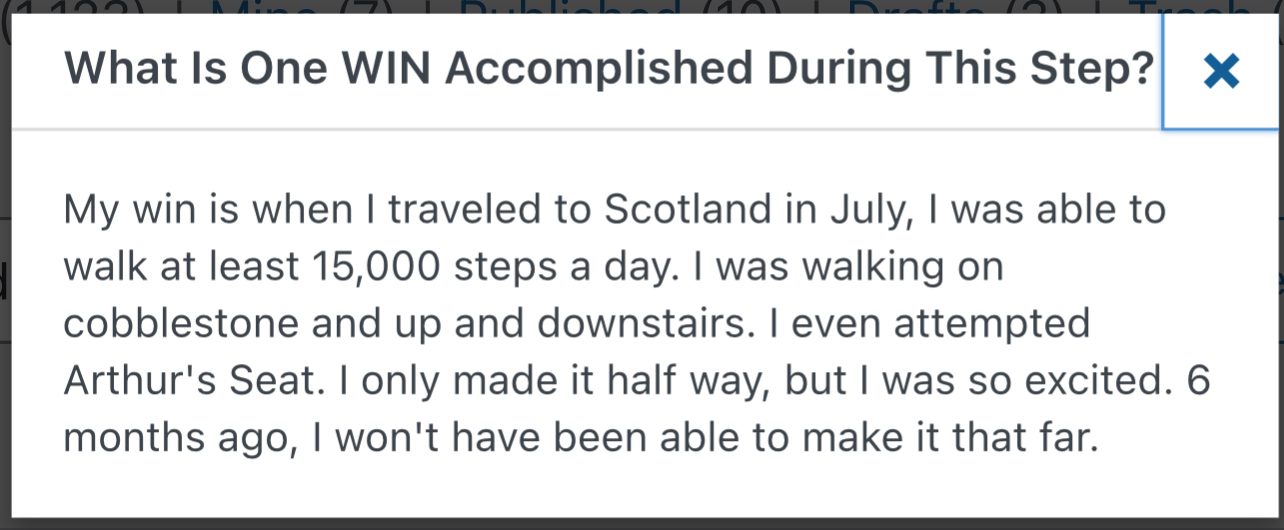

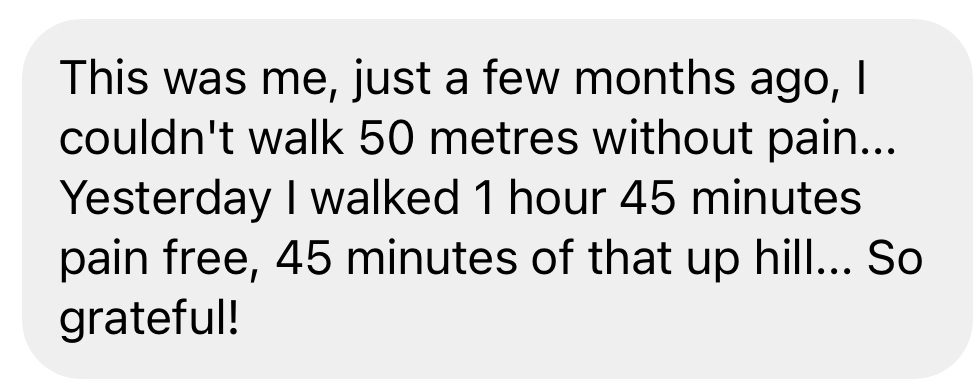



If you are looking to regain your active life but are unsure where to start, join the revolutionary membership, Adventurers for Life. This is a step-by-step path that not only will help you find pain relief but will help you unlock adventure. You’ll get workouts, tests to pass to make sure you are on the right track, community events and MORE.
Alyssa Kuhn
Disclaimer: This post is for general informational purposes only. It should not be used to self-diagnose and it is not a substitute for a medical exam, cure, treatment, diagnosis, and prescription or recommendation. It does not create a doctor-patient relationship between Dr. Kuhn and you. You should not make any change in your health regimen or diet before first consulting a physician and obtaining a medical exam, diagnosis, and recommendation. Move Well Age Well, LLC and Dr. Alyssa Kuhn, PT, DPT are not liable or responsible for any advice, course of treatment, diagnosis or any conclusions drawn, services or product you obtain through this post, video or site. Complete all exercises at your own risk.


